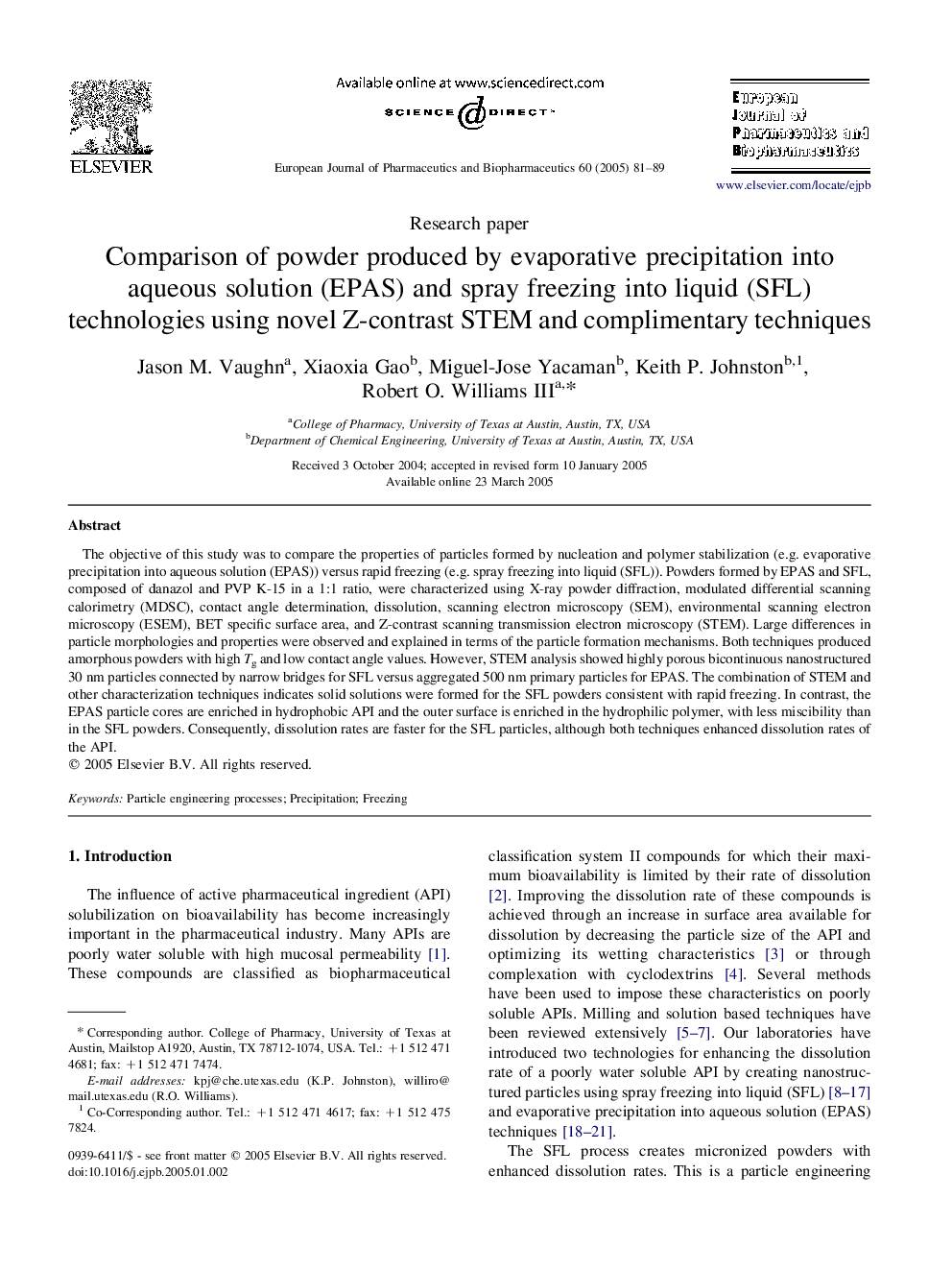| کد مقاله | کد نشریه | سال انتشار | مقاله انگلیسی | نسخه تمام متن |
|---|---|---|---|---|
| 9901488 | 1545423 | 2005 | 9 صفحه PDF | دانلود رایگان |
عنوان انگلیسی مقاله ISI
Comparison of powder produced by evaporative precipitation into aqueous solution (EPAS) and spray freezing into liquid (SFL) technologies using novel Z-contrast STEM and complimentary techniques
دانلود مقاله + سفارش ترجمه
دانلود مقاله ISI انگلیسی
رایگان برای ایرانیان
کلمات کلیدی
موضوعات مرتبط
علوم زیستی و بیوفناوری
بیوشیمی، ژنتیک و زیست شناسی مولکولی
بیوتکنولوژی یا زیستفناوری
پیش نمایش صفحه اول مقاله

چکیده انگلیسی
The objective of this study was to compare the properties of particles formed by nucleation and polymer stabilization (e.g. evaporative precipitation into aqueous solution (EPAS)) versus rapid freezing (e.g. spray freezing into liquid (SFL)). Powders formed by EPAS and SFL, composed of danazol and PVP K-15 in a 1:1 ratio, were characterized using X-ray powder diffraction, modulated differential scanning calorimetry (MDSC), contact angle determination, dissolution, scanning electron microscopy (SEM), environmental scanning electron microscopy (ESEM), BET specific surface area, and Z-contrast scanning transmission electron microscopy (STEM). Large differences in particle morphologies and properties were observed and explained in terms of the particle formation mechanisms. Both techniques produced amorphous powders with high Tg and low contact angle values. However, STEM analysis showed highly porous bicontinuous nanostructured 30Â nm particles connected by narrow bridges for SFL versus aggregated 500Â nm primary particles for EPAS. The combination of STEM and other characterization techniques indicates solid solutions were formed for the SFL powders consistent with rapid freezing. In contrast, the EPAS particle cores are enriched in hydrophobic API and the outer surface is enriched in the hydrophilic polymer, with less miscibility than in the SFL powders. Consequently, dissolution rates are faster for the SFL particles, although both techniques enhanced dissolution rates of the API.
ناشر
Database: Elsevier - ScienceDirect (ساینس دایرکت)
Journal: European Journal of Pharmaceutics and Biopharmaceutics - Volume 60, Issue 1, May 2005, Pages 81-89
Journal: European Journal of Pharmaceutics and Biopharmaceutics - Volume 60, Issue 1, May 2005, Pages 81-89
نویسندگان
Jason M. Vaughn, Xiaoxia Gao, Miguel-Jose Yacaman, Keith P. Johnston, Robert O. III,